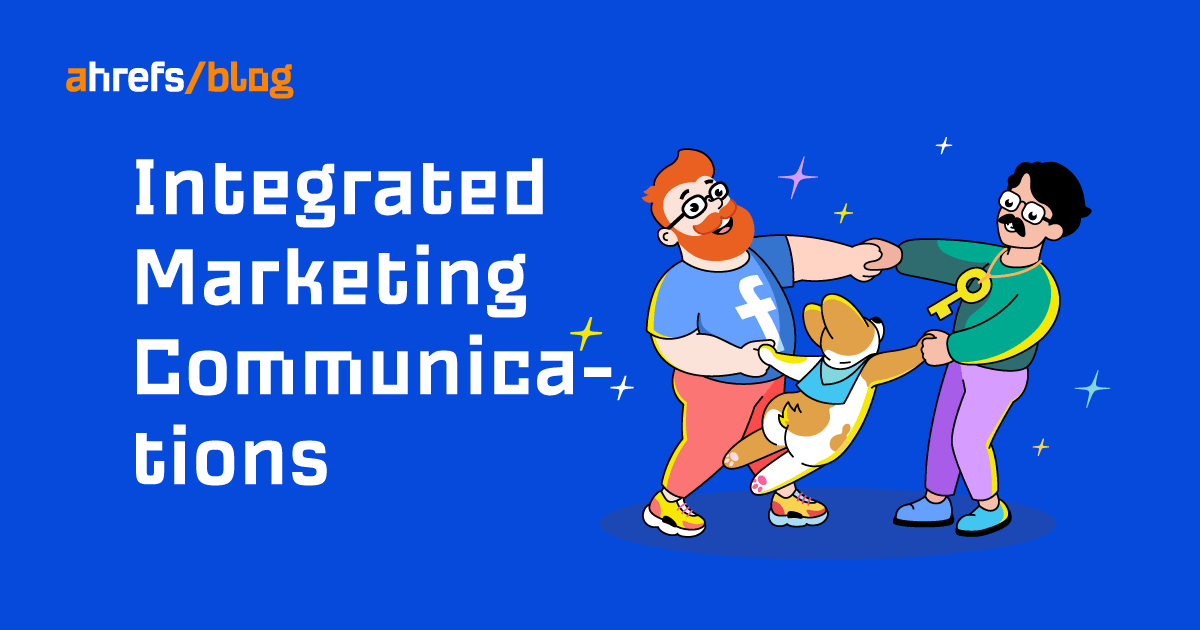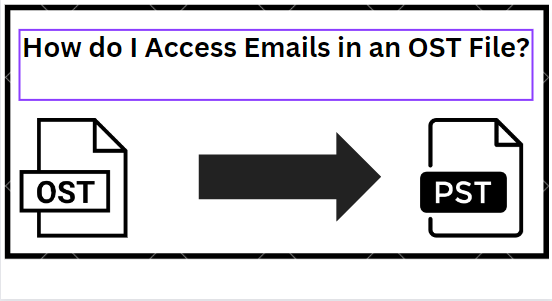What’s a Good Click-through Rate?
Checkout some of the most effective ways to improve the CTR (Click Through Rate) which is one of the hidden search engine ranking factors. The post What’s a Good Click-through Rate? appeared first on Stan Ventures.

Why do some Google search results get clicked while many others are ignored?
If you are running a marketing campaign, you know how a good click-through rate can help improve the success.
But here’s the twist. How do you know the click-through rate of your page has touched the “good” threshold?
This can be tricky, especially with the click-through rate crazily varying across niches. Plus, the multitude of marketing channels to run campaigns, including organic search, PPC, email marketing, social media and more, add more layers of complexity to CTR calculation.
That’s exactly why you need a blueprint predefining a good click-through rate across different marketing channels and industries.
In this blog, we will delve into what a good click-through rate really is and what you can do to attract all those important clicks for your marketing campaign.
Understanding Click-through Rate

Click-through rate, or CTR, is the measure of how often users come across your page and click on it.
That said, to measure CTR, you need to know how frequently your content appears online—that’s what we call impressions.
CTR is calculated by dividing the number of clicks by impressions. For example, if you get 5 clicks per 100 impressions, your CTR is 5%.
I’ll break down CTR calculation in detail later in this article. Keep reading.
Importance of CTR in Marketing
Alright. You have to calculate CTR. But why?
Indicates Relevance and Engagement
A high CTR denotes that your page is engaging and relevant to your target audience.
When users come across your pages in Google search (ads and organic listings) and feel compelled to click, it indicates that your content resonates with them.
Establishing this relevance through your content is essential because it can drive traffic to your site, help in qualified lead generation, boost sales and bolster your business ROI.
Bolsters Higher Organic Search Rankings
Google’s NavBoost algorithm relies heavily on user clicks to determine relevant results. The May 2024 Google leak documentation reveals that Navboost has its own module focused on click signals, denoting users as voters.
The NavBoost algorithm leverages 13-month-old historical data of user clicks and can influence your content’s organic rankings based on the clicks it has received.
That means if users frequently navigate to your page by clicking on it in search results, your content is likely to get a ranking boost.
Think of it this way. Let’s say you own a bakery website and your product page featuring strawberry muffins is ranking somewhere low in SERPs. Now, if some top food bloggers talk highly about your strawberry muffins, people will start looking for that page online.
This can boost the click-through rate of your page. With increased click-through rate come higher rankings and greater visibility.
This way, the click-through rate can influence your site’s organic rankings.
Impacts Quality Score in PPC Campaigns
CTR is a prime factor in determining your Quality Score In Pay-Per-Click campaigns, such as Google Ads.
Google leverages the Quality Score metric to determine the relevance and quality of your ads to user searches. The higher your Quality Score, the lower the costs per click (CPC) and better ad placements.
A good CTR can significantly complement your ad performance and help reduce your ad spend. This will ultimately open doors to a cost-effective marketing strategy.
Click Rate Vs. Click-Through Rate
Speaking of click-through rate, many people confuse it with click rate. Going forward, you should know what sets the click-through rate apart from the click rate.
Click Rate
Click rate often finds application in email marketing. It is the measure of the number of times your email is opened in proportion to the total number of recipients. For instance, if you send 500 emails and 50 of them are opened, your click rate is 10%.
This metric only helps you figure out how many people clicked on your email to read the message it contains.
Click-Through Rate
In general, as I mentioned earlier, the click-through rate is the ratio of the number of clicks your content receives to the total number of times it is displayed.
In terms of email marketing, the click-through rate denotes the number of recipients who click on the link or buttons within your message to visit your landing page.
Irrespective of the marketing channel, CTR helps you assess the performance of your content and its relevance to your target audience. This metric is super important because it directly measures the effectiveness of your content in prompting user interaction with a specific page on your website.
How is CTR Calculated?
So, here’s the click-through rate formula.
CTR= (Clicks/ Impressions)×100
This formula gives you a percentage that represents the proportion of users who clicked on your page in SERPs compared to the total number of people who viewed it.
Let’s break down the formula with a simple example. Suppose your content receives 200 clicks and after being shown up 10,000 times.
CTR=(200/10000)×100= 2%
So, your CTR is 2%, That means 2 out of every 100 people who see your ad click on it.
Step-by-Step Guide to Calculating CTR
Check out how you can extract the number of clicks and impressions to calculate your CTR.
Identify the Number of Clicks
The first step in calculating CTR is to determine how many clicks your content has received. You can find this data using Google Analytics.
For paid campaigns, you can find the information in your Google Ads account. Alternatively, you can access the data through Google Analytics and Google Search Console by linking them with your Google Ads account.
If you’ve received 250 clicks, for example, that’s the number you are going to use to calculate your CTR.
Identify the Number of Impressions
Next, find out how many times your page was displayed for user searches. If your page was displayed 5,000 times, for instance, that’s your number of impressions.
Apply the Formula and Calculate
Now that you have both the number of clicks and impressions, you can apply the CTR formula. Divide the number of clicks by the number of impressions and then multiply by 100 to get a percentage.
CTR=(Clicks/ Impressions)×100
CTR=(250/5000)×100=5%
So, your CTR is 5%.
What is a Good CTR?
Here comes the most awaited question. What’s a good CTR?
Determining a good click-through rate (CTR) can be pretty challenging because it varies significantly across industries.
Let’s take two businesses A and B, belonging to the fitness and travel industries respectively. A good CTR for a marketing campaign run by A may be different from what B calls a good CTR. This is primarily because the two businesses belong to different niches.
That said, understanding your specific industry norms is essential to determine a good CTR for you.
Factors Influencing a Good CTR
Here’s a look at the key factors that determine a good CTR.
Industry Standards and Norms
As I said earlier, different industries have different expectations and standards for CTRs.
This can be influenced by nuances like the nature of your product or service, the competitiveness of the target market, the type of ad you are running, and the audience you are targeting.
Being aware of the standards and the average expected CTR in your industry can help you set achievable goals for your campaigns.
Organic Ranking Position
Your page’s organic ranking position can influence its click-through rate considerably.
A recent study reveals that a page ranking in position 1 in Google’s organic search results is likely to receive nearly 40% of user clicks, while a page ranking in position 3 gets only 10% of user clicks. Yes, that’s a 30% cut for just two more positions down.
Pages ranking further lower will receive even lower click-through rates.
That said, making it to a higher SERP position can help you attract more clicks organically.
Ad Placement and Format
The placement and format of your ad can also significantly affect your CTR.
Search ads that appear at the top of SERPs often have higher CTRs than banner ads displayed across web pages.
Additionally, the design and relevance of your ad can impact its effectiveness. For example, video ads on social media platforms are likely to perform better than static image ads.
Target Audience and Demographics
Your target audience and their demographics play a critical role in determining your CTR. Factors such as age, gender, location, and interests can impact how likely someone is to click on your page. Tailoring your content to meet the needs of your specific audience can help improve your CTR.
Industry Standard Click-Through Rates
Different sectors have varying average CTRs across multiple platforms. Here are some insights by industry for search ads, organic search, display ads, email marketing, and social media.
| Industry | Search Ads | Organic Search (Top 100) | Display Ads | Email Marketing | Social Media |
| Retail | 2.81% | 1.75% | 0.15% | 2.65% | 0.81% |
| Technology | 2.09% | 1.35% | 0.13% | 6.30% | 1.05% |
| Healthcare | 3.27% | 1.32% | 0.14% | 2.41% | 1.21% |
| Finance | 2.91% | 2.07% | 0.12% | 5.90% | 0.98% |
| Real Estate | 8.55% | 2.12% | 0.12% | 2.77% | 0.85% |
| E-Commerce | 5.50% | 1.48% | 0.15% | 2.08% | 0.31% |
| Travel | 9.19% | 2.58% | 0.18% | 1.98% | 0.48% |
Explanation of CTR Averages:
Retail

In the retail industry, organic search results attract an average click-through rate of 1.75%, while Search ads secure a CTR of 2.81%. Email marketing follows with an average CTR of 2.65%, and social media platforms yield a CTR of 0.81%. Display ads showcase the lowest performance, with a CTR of 0.15%. [Sources- First Page Sage, Rival IQ, Social Media Dashboard].
As far as the retail sector is concerned, seasonal promotions, attractive discounts, and eye-catching advertisements significantly influence click-through rates.
Technology:
The technology sector sees an organic CTR of 1.35%, while search ads generate a higher CTR of 2.09%. Email marketing is particularly effective in this industry, boasting a CTR of 6.30%. Social media hits a CTR of 1.05%, while display ads lag behind with a minimal CTR of 0.13%. [Sources- First Page Sage, Sprout Social]
Effective use of detailed specifications and product and tech reviews can enhance CTR in this industry. Plus, well-targeted email campaigns can help improve your click-through rate and drive more traffic to your page.
Healthcare:
In healthcare, organic search witnesses an average CTR of 1.32%, and search ads showcase a good performance with a CTR of 3.27%. On the other hand, Email marketing achieves a CTR of 2.41%, while social media witnesses a CTR of 1.21%. Again, display ads secure the last place with an average CTR of only 0.14%. [Sources- Databox, Socialinsider]
As healthcare comes under the YMYL (Your Money Your Life) category, this industry is most likely to have stringent regulations in place that can influence the results of your marketing campaigns.
Finance:
In the finance sector, organic search results lead to a CTR of 2.07%, with search ads slightly higher at 2.91%. Email marketing excels in this industry, reaching a CTR of 5.90%. Social media has a CTR of 0.98%, and display ads have the lowest CTR at 0.12%. [Sources- WebFX, Social Media Dashboard]
Finance is another industry that falls under the YMYL category. That said, finance-oriented campaigns often need to build trust and provide precise information to attract clicks. Strategies such as offering financial advice or highlighting benefits like low interest rates can improve CTR in this niche.
Real Estate:
In real estate, the average organic search CTR stands at 2.12%, with the CTR of search ads significantly higher at 8.55%. Email marketing shows a decent performance with a CTR of 2.77%. Social media has a lower CTR of 0.85%, and display ads mirror the lowest performance, with a CTR of 0.12% [Sources- Databox, Social Media Dashboard]
If your run a real estate business, investing in Search ads, organic search and email marketing campaigns can help attract a good number of clicks that can translate into potential leads for your merchandise.
E-Commerce:
The e-commerce industry sees an average organic CTR of 1.48%, while Search ads amount to a click-through rate of 5.50%. Email marketing, on the other hand, maintains a moderate CTR of 2.08% in the e-commerce space. Social media experiences an average CTR of 0.31%, while display ads are at the lower end with an average CTR of 0.15%. [First Page Sage, Rival IQ]
That said, e-commerce brands can benefit from strategic use of all the marketing channels for promotions. Organic search, Search ads and email marketing can be particularly useful for boosting click-through rates.
Travel:
Travel industry trends show an average organic click-through rate of 2.58%, with search ads hitting a whopping 9.19%. Email marketing records a CTR of 1.98%, and social media has a CTR of 0.48%. Display ads exhibit the least impact, with a CTR of 0.18%. [Sources-Databox, Rival IQ]
Investing in the right PPC keywords and coupling it with result-focused organic SEO and social media efforts can spike up click-through rates for your travel business.
These averages provide a benchmark, but your specific CTR can be influenced by several factors, including the quality of your ad copy, your targeting, and your overall marketing strategy.
To find the most accurate and up-to-date CTR benchmarks for your industry, you can rely on resources like Google Ads Benchmarks, Mailchimp, Campaign Monitor, and other industry-specific reports. Keeping track of these benchmarks can help you tweak your strategies to improve your ad performance and achieve higher click-through rates.
Click-Through Rate by Marketing Channels
Here’s how the click-through rate can vary based on the marketing channels you choose to promote your content.
Organic Google Search

CTR in organic search refers to the percentage of users who click on a link from the search engine results after performing a search.
A high organic CTR indicates that your meta titles and descriptions are compelling and relevant to the search query. This can help drive more traffic to your website and boost your Google rankings.
Pay-Per-Click (PPC) Advertising

PPC advertising, such as Google Ads, requires paying for each click on your ads. The CTR of PPC campaigns allows you to measure the effectiveness of your ads in capturing the user’s attention. A higher CTR means your ads are well-targeted and more effective.
Email Marketing

As I mentioned earlier, In email marketing, CTR is calculated based on the number of clicks on links within the email and the number of emails sent. This metric helps you gauge the effectiveness of your email content and call-to-actions (CTAs).
Affiliate Marketing

In affiliate marketing, CTR tells you how often users click on your affiliate links placed in the content. A higher CTR here means that the target audience finds the linked products or services relevant.
Social Media Marketing

When it comes to social media marketing, CTR denotes the percentage of users who click on your links from social media posts or ads. This metric helps you understand how engaging your social media content is and how well it drives traffic to your website.
Display Ads

In terms of display advertising, CTR refers to the percentage of users who click on your banner ads displayed across websites. This CTR for banner ads is usually low compared to the other channels.
Analysis and Comparison of CTRs Across Channels
Let me give you some interesting numbers on CTR across different marketing channels.
Organic Google Search: The top result on Google often sees click-through rates of around 39.8%. Pages that rank lower, such as in position 10, are likely to have a CTR of 1.6%. PPC Advertising: The average CTR for Google Ads is 2.1% and it can fluctuate around 1.2%, depending on the ad position and industry. Email Marketing: The average click-through rate for email marketing campaigns is 2.44% and it can vary depending on the industry and the quality of the email list. Affiliate Marketing: CTRs here can be highly variable but generally range between 0.8–1.5%. Social Media Marketing: Average CTR for social content range from 1.1 to 1.3% depending on the platform and the nature of the content. Display Advertising: The average click-through rate for display ads is as low as 0.46%.Strategies to Improve Your CTR
Implementing the best practices I’ve listed below can help you improve the click-through rates of your content.

Conduct Thorough Keyword Research
When it comes to improving your click-through rate, keyword research plays a major role.
You need to find and invest in keywords that are most relevant to your target audience. This involves identifying high-traffic keywords that align with your products or services. Make sure your content is optimized using the selected keywords.
By doing so, you increase the likelihood of your page appearing in front of users who are actively searching for what you offer. Remember, the more relevant your keywords, the higher your content relevance and CTR.
Craft a Compelling Ad Copy
Another great step to improve your click-through rate is to create a compelling ad copy.
Your ad copy should be crisp, clear and relevant to your target audience. Remember, each description of an ad copy on Google can only be 90 characters long.
Use simple language that directly addresses the needs of your audience.
Highlight the unique selling points and features of your product or service in such a way that it grabs the attention of your audience.
Write Effective Meta Descriptions
Writing persuasive meta descriptions can help boost your organic CTR significantly.
When your page appears in SERPs, the meta description tells searchers what your page is about. The more precise your meta description, the higher the chances of users clicking on the result to land on your page.

As the meta description is limited to a maximum of 160 characters, it is important that you keep it specific and to the point. Check meta description length for free.
Use one or two main keywords naturally in your meta description. When users find these keywords while they skim through search results, they are more likely to stop by and visit your site.
Crafting your meta description in such a way that it crisply answers the user’s queries without exceeding the character limit can help you gain the upper hand in spiking your click-through rate.
Localize Your Content
Are you a business owner targeting potential customers in a specific location? If yes, this tip is something you should never miss out on.
To get more user clicks and impressions from a particular location, you need to localize your content. Ensure that you mention the location in your title tag and meta description.
Localizing your content will help you make it to Google’s Local Pack, a SERP feature that lists top-ranking local businesses. This will fetch you a higher CTR ultimately.

Also, build a dedicated Google My Business Profile (GBP) to help people find your business information when performing local searches.
Personalize Emails Carefully
If you are into email marketing, this one’s for you.
When crafting your email content, you need to go beyond generic messages and tailor your emails to create a personal connection with your audience.This includes using their names, referencing their past interactions, and more.
Make sure you segment your audience well in advance to ensure that you create and serve content that matches their interests.
Craft compelling subject lines that hook up the reader’s curiosity and include actionable call-to-action buttons to prompt them to click through to your website.
This way, you can use personalized emails to significantly increase engagement and CTR.
Use Strong Calls-to-Actions
Again, a strong call-to-action (CTA) is crucial for driving more clicks.
No matter which channel you choose to promote your content, your CTA should be pretty direct and action-oriented in order to encourage users to take a specific action.
CTA buttons or links like “Get Started,” “Learn More,” or “Sign Up Now,” that are preceded by persuading content can fetch you more clicks.
Use contrasting colors or bold fonts to ensure that your CTAs visually stand out from the rest of your content.
Test Different Content Variants
Test different headlines, ad copy, images, CTAs and content formats using A/B testing.
Analyze the results to determine which variant attracts the highest CTR. This iterative process will allow you to refine your target page and improve its performance.
Leverage Specific Targeting Techniques
Well-targeted campaigns are likely to witness high click-through rates. Here are some tips for such specific targeting.
Ensure your content is featured on trusted websites and social media pages that your potential customers are most likely to visit.
Use high-quality images and easily readable fonts for your ads. Ensure that your images are visually appealing. It is an added advantage if it matches your brand colors.
Leverage advanced targeting techniques, including demographic targeting, interest-based targeting and retargeting to make sure that your ads are visible to users who are most likely to be interested in purchasing what you sell.
Place Affiliate Links Naturally in the Content
To achieve a high click-through rate in affiliate marketing, you need to choose products that genuinely align with the preferences of the audience.
Beware. Affiliate marketing campaigns that are blatant promotions often don’t produce desired results. Place the affiliate links naturally within the content. This way, the users will feel that the product or service recommendations are a natural extension of the content they are reading.
This improves the chances of the users clicking on the affiliate link and landing on your page.
Create Attractive Display Ads
Display ads rely heavily on visual appeal to capture the attention of users and drive clicks.
That said, you need to design your display ad in such a way that it stands out and attracts your target audience.This involves creating high-quality images, choosing eye-catching colors, and delivering clear messages.
Also, ensure that your ads are contextually relevant to the sites they appear on. This will complement click-through rates considerably.
Focus on Landing Page Relevance and Optimization
When people click on your content appearing in search results, they end up landing on your page. So, you need to ensure that your landing page is relevant and well-optimized. That’s how you will be able to provide a seamless transition for the users.
Make sure the content on the landing page aligns with your ad copy. If your content in SERPs is about a festive discount, for instance, the landing page should prominently feature that discount.
Ensure your landing page loads quickly on both desktop and mobile devices. Slow load times can lead to high bounce rates and have a negative impact on your CTR.
Your landing page should have a clear and genuinely compelling CTA. Guide the user every step of the way, whether it’s filling out a form, making a purchase, or downloading a resource to add value to them.
Common Mistakes to Avoid
Here’s a look at things you should never do if you want to improve your CTR.
Ignoring Content Relevance
One of the most common mistakes in managing CTR is ignoring the relevance of your content to the target audience.
If your ads do not match the interests, needs or search intents of your audience, they are unlikely to generate clicks.
Using irrelevant content to attract clicks can backfire. It is likely to bring down your performance, affect your click-through rates and lead to increased overhead costs for your business.
Poor Targeting or Broad Audience
Another common pitfall is poor targeting. If your audience targeting is too generic, your content may not reach the right people.
This lack of precision can dilute the effectiveness of your campaigns and open doors to decreased user engagement and lower CTR.
Overlooking the Importance of Ad Design
The design of your ad plays a significant role in attracting clicks. Ads that are cluttered, unattractive or difficult to understand may not be able to get the user’s attention.
Neglecting aspects such as color schemes, and font styles can affect the overall visual appeal of your ads. As a result, they may not perform well.
Solutions and Preventive Measures
So, how do you avoid the pitfalls along your way to an improved CTR? Let me suggest some preventive measures.
Regular Performance Reviews and Adjustments
Conduct performance reviews of your ad campaigns regularly to analyze key metrics such as CTR, conversion rates, and ROI.
Identify any underperforming ads and make necessary changes. This constant monitoring of your marketing campaigns allows you to resolve issues quickly and optimize them for better performance.
Analytics and User Feedback
Use analytics tools like Ahrefs, Google Analytics, Facebook Insights and others to gain productive insights into how your content or ads are performing. These insights will also help you identify user behavior patterns and trends you can leverage to improve your content’s overall performance.
Also, collect user feedback through surveys to understand your audience better and use the insights to create more effective content in the future.
Continuous Learning and Adaptation to Market Trends
The digital marketing landscape is constantly evolving. You need to keep learning and tap into the latest trends in the industry to run engaging ad campaigns that drive success for your business.
Participate in webinars, attend industry conferences, and follow influential marketing blogs to stay informed about the latest developments and best practices in the digital marketing space. This will allow you to refine your marketing strategies and maintain a competitive edge at all times.
Knowing what a good CTR is and hitching your marketing campaigns to that benchmark can help boost your performance, reduce costs and expand your profit margins exponentially.
Remember, a good CTR varies from one niche to the other. However, with meticulous monitoring and optimization while keeping an eye on the industry benchmarks, you can set realistic goals and achieve them.
Stay informed, keep testing, and watch your click-through rates spike up.

 AbJimroe
AbJimroe 
































